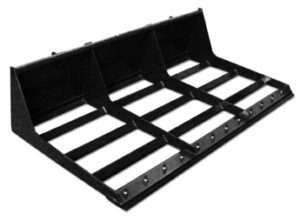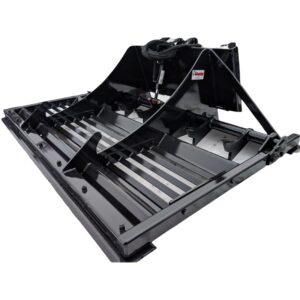(615) 547-4033
Land Levelers
Land levelers, also known as land grading equipment or land planes, are machines used in agriculture, construction, and land development to achieve precise and even surfaces on the ground. These tools play a crucial role in preparing land for various purposes, including farming, construction projects, landscaping, and sports field maintenance. Here’s a summary of land levelers:
- Purpose: Land levelers are designed to create flat and uniform surfaces by removing high spots, filling in low areas, and redistributing soil to achieve the desired grade. They are used to improve drainage, enhance soil quality, and create even surfaces for planting, building, or other activities.
- Types: There are different types of land levelers available, including towed or pulled models, attachment types for tractors or skid steer loaders, and self-propelled units. The choice of type depends on the scale of the project and the available equipment.
- Adjustable Blade: Land levelers feature an adjustable blade or leveling mechanism that can be raised or lowered to control the depth of soil removal or fill placement. Some models also allow the operator to angle the blade to direct soil flow.
- Surface Precision: Land levelers are known for their ability to achieve high levels of surface precision. They can create flat surfaces for various applications, such as preparing fields for planting crops or ensuring smooth foundations for construction.
- Application Areas: Land levelers are widely used in agriculture to prepare fields for planting, improve irrigation, and enhance crop growth. In construction, they are used for site grading, road construction, and creating building foundations. Landscapers use them to create level lawns and recreational areas.
- Soil Conservation: Land levelers help reduce soil erosion and improve water management by creating even slopes that direct water flow away from sensitive areas.
- Versatility: Land levelers can handle a variety of materials, including soil, sand, gravel, and even small rocks. Some models come with attachments like scarifiers or rippers to break up hard or compacted soil.
- Efficiency: These machines are efficient and can cover large areas quickly, reducing the time and labor required for land preparation and grading tasks.
- Maintenance: Regular maintenance, including blade sharpening or replacement, lubrication, and inspection of hydraulic systems (if applicable), is essential to keep land levelers in optimal working condition.
- Safety: Operators of land levelers must adhere to safety guidelines, as these machines involve moving parts and heavy equipment. Proper training and safety precautions are crucial to prevent accidents.


